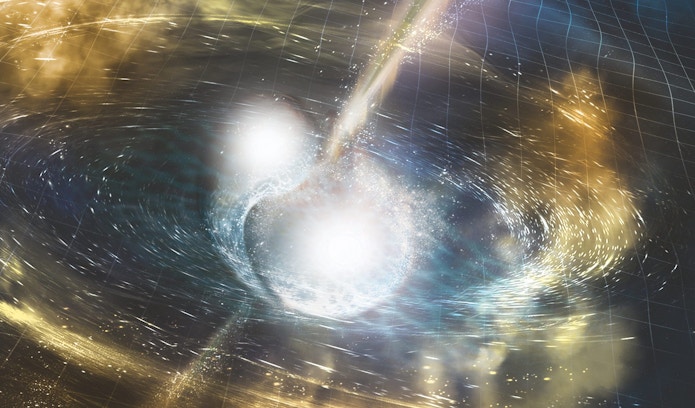CCA Research Scientist Matteo Cantiello Receives Aspen Institute Italia Award

A research project studying the afterglow of two neutron stars merging is this year’s winner of the Aspen Institute Italia Award, which recognizes outstanding scientific research and collaboration between Italy and the United States. The project’s members include Matteo Cantiello, a research scientist at the Flatiron Institute’s Center for Computational Astrophysics. The award ceremony will take place on September 20.
Cantiello shares the award with Davide Lazzati of Oregon State University, Rosalba Perna of Stony Brook University in New York, Brian J. Morsony of the University of Maryland in College Park, Diego Lopez-Camara of the Universidad Nacional Autónoma de México in Mexico City, Riccardo Ciolfi of the Osservatorio Astronomico di Padova in Italy, Bruno Giacomazzo of the Trento Institute for Fundamental Physics and Applications in Italy, and Jared C. Workman of Colorado Mesa University. The award is part of Aspen Institute Italia’s “commitment to encouraging and developing international leadership and transatlantic relations.”
The winning researchers studied the aftermath of two dense stars coming together. That merger, first detected in August 2017, ushered in a new era as astronomers observed both light and gravitational waves from the same event. Among the different fundamental discoveries accompanying such an extraordinary event, it was possible to confirm that the merger of two neutron stars can launch a collimated energy outflow or jet powerful enough to produce a short burst of gamma rays.
By comparing electromagnetic observations collected within the first few months (since the initial gravitational wave detection) with advanced computer simulations, the winning research project demonstrates the compatibility of the data with the hypothesis of a canonical collimated jet of energy analogous to any other short gamma-ray burst. In this case, it was observed not along the propagation direction of the jet itself but from a different viewing angle. Further data collected in the following months confirmed that the hypothesis supported in this work is indeed correct.

Cantiello joined the foundation in 2017 as associate research scientist at the Center for Computational Astrophysics. His work focuses on the life and death of single and binary stars. He uses a variety of computational and observational tools, including 1D stellar evolution, 3D magneto-hydrodynamics calculations of stellar interiors, the study and observation of wave propagation inside stars (asteroseismology), the observations of stellar populations, stellar explosions and the gravitational wave emission from the mergers of compact stellar remnants.
Before joining the Flatiron Institute, Cantiello was a specialist in astrophysics at the Kavli Institute for Theoretical Physics at the University of California, Santa Barbara, and an Argelander Fellow at Bonn University. He holds a Ph.D. in theoretical astrophysics from Utrecht University and a M.Sc. in theoretical physics from the University of Pisa.


